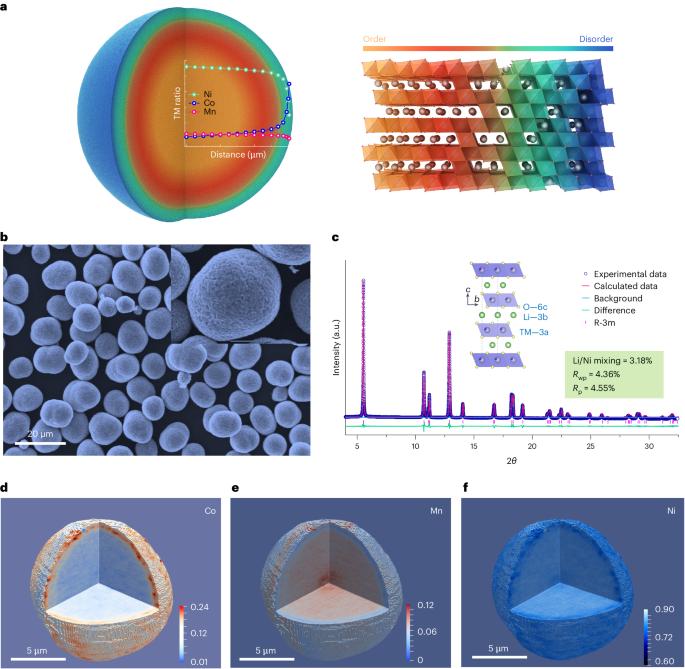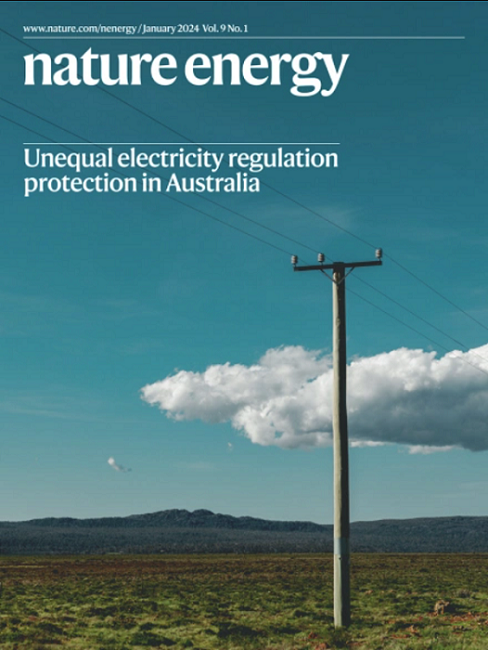Ultrastable cathodes enabled by compositional and structural dual-gradient design
IF 49.7
1区 材料科学
Q1 ENERGY & FUELS
引用次数: 0
Abstract
Cathodes for next-generation batteries are pressed for higher voltage operation (≥4.5 V) to achieve high capacity with long cyclability and thermal tolerance. Current cathodes fail to meet these requirements owing to structural and electrochemical strains at high voltages, leading to fast capacity fading. Here we present a cathode with a coherent architecture ranging from ordered to disordered frameworks with concentration gradient and controllable Ni oxidation activities, which can overcome voltage ceilings imposed by existing cathodes. This design enables simultaneous high-capacity and high-voltage operation at 4.5 V without capacity fading, and up to 4.7 V with negligible capacity decay. Multiscale diffraction and imaging techniques reveal the disordered surface is electrochemically and structurally indestructible, preventing surface parasitic reactions and phase transitions. Structural coherence from ordering to disordering limits lattice parameter changes, mitigating lattice strain and enhancing morphological integrity. The dual-gradient design also notably improves thermal stability, driving the advancement of high-performance cathode materials. Battery cathodes tend to degrade severely during high-voltage operations. Here the authors present a cathode design with a structurally coherent architecture, ranging from ordered to disordered frameworks, that addresses this issue.


通过成分和结构双梯度设计实现超稳定阴极
下一代电池的阴极需要更高的工作电压(≥4.5 V),以实现高容量、长循环性和耐热性。目前的阴极无法满足这些要求,因为在高电压下会产生结构和电化学应变,导致容量快速衰减。在这里,我们提出了一种具有从有序框架到无序框架的连贯结构、浓度梯度和可控镍氧化活性的阴极,它可以克服现有阴极施加的电压上限。这种设计可在 4.5 V 电压下同时实现高容量和高电压运行,且不会出现容量衰减,在高达 4.7 V 电压下,容量衰减可忽略不计。多尺度衍射和成像技术揭示了无序表面在电化学和结构上的不可破坏性,防止了表面寄生反应和相变。从有序到无序的结构一致性限制了晶格参数的变化,减轻了晶格应变,增强了形态完整性。双梯度设计还显著提高了热稳定性,推动了高性能阴极材料的发展。
本文章由计算机程序翻译,如有差异,请以英文原文为准。
求助全文
约1分钟内获得全文
求助全文
来源期刊

Nature Energy
Energy-Energy Engineering and Power Technology
CiteScore
75.10
自引率
1.10%
发文量
193
期刊介绍:
Nature Energy is a monthly, online-only journal committed to showcasing the most impactful research on energy, covering everything from its generation and distribution to the societal implications of energy technologies and policies.
With a focus on exploring all facets of the ongoing energy discourse, Nature Energy delves into topics such as energy generation, storage, distribution, management, and the societal impacts of energy technologies and policies. Emphasizing studies that push the boundaries of knowledge and contribute to the development of next-generation solutions, the journal serves as a platform for the exchange of ideas among stakeholders at the forefront of the energy sector.
Maintaining the hallmark standards of the Nature brand, Nature Energy boasts a dedicated team of professional editors, a rigorous peer-review process, meticulous copy-editing and production, rapid publication times, and editorial independence.
In addition to original research articles, Nature Energy also publishes a range of content types, including Comments, Perspectives, Reviews, News & Views, Features, and Correspondence, covering a diverse array of disciplines relevant to the field of energy.
 求助内容:
求助内容: 应助结果提醒方式:
应助结果提醒方式:


